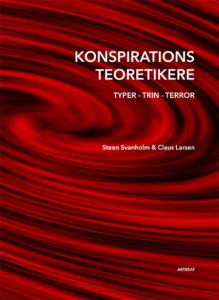Hvordan bruges 911facts.dk?

Hvordan får du mest ud af denne site?
Ny bog på dansk

HVORFOR bliver folk konspirationsteoretikere?
HVORFOR er konspirations-
teoretikere så frustrerende at tale med?
HVORFOR er konspirations-
teoretikeres adfærd så ekstrem?
Disse spørgsmål bliver besvaret i denne bog, der samtidig klarlægger, hvorfor de gængse tiltag overfor konspirations-
teoretikere ikke virker.
Læs mere
Sandhedsbevægelsen
Publikationer
Booking

Er du interesseret i at booke os til foredrag eller workshop, så kan du gøre det her.

Privatlivspolitik

Læs om vores privatlivspolitik.
Der var udstedt ordre til ikke at skyde flyene ned

Påstand
Der var udstedt en “stand down”-ordre, hvilket betød, at luftvåbnet ikke måtte gribe ind og skyde de kaprede fly ned.0
Baggrund
Påstanden bruges sammen med en anden påstand, nemlig at daværende vicepræsident Dick Cheney angiveligt, efter først at have tilranet sig magten over North American Aerospace Defense Command (NORAD), der er den kombinerede militære advarselstjeneste mod angreb mod USA, havde udstedt en såkaldt “stand down”-ordre. Denne betød, at det amerikanske flyvevåben ikke måtte gå på vingerne og søge at standse de kaprede fly ved at enten tvinge dem til landing eller som sidste udvej at skyde dem ned. Derfor må Dick Cheney være en af de direkte ansvarlige for terrorangrebet, der så må være et såkaldt “inside job”.
I den efterfølgende efterforskning, blev chefen for lufttrafikken Norman Mineta, der ligesom Dick Cheney, kort tid før Pentagon blev ramt, var blevet eskorteret til ”The Presidential Emergency Operation Center” (PEOC) i Det Hvide Hus, hvor Dick Cheney på det tidspunkt var øverstbefalende, afhørt af 9/11-kommissionen, den 23. maj 2003:
“During the time that the airplane was coming in to the Pentagon, there was a young man who would come in and say to the Vice President, “The plane is 50 miles out”. “The plane is 30 miles out.” And when it got down to “the plane is 10 miles out,” the young man also said to the Vice President, “Do the orders still stand?” And the Vice President turned and whipped his neck around and said, “Of course the orders still stand. Have you heard anything to the contrary?”
Mineta fortæller altså, at en ung mand kommer ind til vicepræsidenten og beretter, at flyet hastigt nærmer sig Pentagon. Da flyet kun er 15 km væk, spørger den unge mand vicepræsidenten, om ordren stadig gælder. Vicepræsidenten vender sig om og siger: ”Selvfølgelig gælder ordren stadig. Har du hørt noget, der modsiger den?”
Ud fra dette hævdes det, at Norman Mineta taler om en “stand down”-ordre0.
https://www.youtube.com/watch?v=RRJAI4-e7Xw
Fakta
NORADs opgave i tiden ind til terrorangrebet den 11. september 2001 var at overvåge luftrummet udenfor Nordamerika for at detektere mulige atomangreb fra primært USSR/Rusland. Efter terrorangrebet blev NORAD’s område udvidet til også at omfatte luftrummet over selve Nordamerika.
Hvis man læser hele vidneudsagnet1, og ikke blot forlader sig på et kort citat, fortæller det klart og tydeligt det stik modsatte, nemlig at Mineta taler om en “shoot down” ordre, som var givet af præsident George Bush, da det blev klart, at der var tale om terrorangreb mod USA. Det var denne ordre, Cheney fulgte.
MR. KEAN: Thank you, Mr. Secretary. When you were being prepared in the sense of preparing yourself to take your role in the Cabinet, were you briefed in any way, or what part of the possibility of terrorism occurring was part of your preparation? I mean, as you’ve looked at all the vast things you have to understand for your position, was the possibility of terrorism and what you might have to do in the result of terrorism a large part of that briefing, a small part of that briefing?
MR. MINETA: The nature of what was happening in the civil aviation industry in the United States at that time did not put terrorism high on the list of priorities. We were still dealing with the whole issue of delays, of congestion, of capacity issues, and so terrorism was really not something that I was prepared to deal with except as it came up on that tragic day.
MR. KEAN: So you had to improvise, in a sense, based on what was happening and the news reports you were getting.
MR. MINETA: Absolutely. And in terms of what motivated me to bring all the aircraft down, as you see one thing happen, that’s an accident. When you see two of the same thing occur, it’s a pattern. But when you see three of the same thing occur, it’s a program. And so at that point I decided to bring all the aircraft down. …
MR. HAMILTON: We thank you for that. I wanted to focus just a moment on the Presidential Emergency Operating Center. You were there for a good part of the day. I think you were there with the vice president. And when you had that order given, I think it was by the president, that authorized the shooting down of commercial aircraft that were suspected to be controlled by terrorists, were you there when that order was given?
MR. MINETA: No, I was not. I was made aware of it during the time that the airplane coming into the Pentagon. There was a young man who had come in and said to the vice president, “The plane is 50 miles out. The plane is 30 miles out.” And when it got down to, “The plane is 10 miles out,” the young man also said to the vice president, “Do the orders still stand?” And the vice president turned and whipped his neck around and said, “Of course the orders still stand. Have you heard anything to the contrary?” Well, at the time I didn’t know what all that meant. And —
MR. HAMILTON: The flight you’re referring to is the —
MR. MINETA: The flight that came into the Pentagon.
MR. HAMILTON: The Pentagon, yeah.
MR. MINETA: And so I was not aware that that discussion had already taken place. But in listening to the conversation between the young man and the vice president, then at the time I didn’t really recognize the significance of that. And then later I heard of the fact that the airplanes had been scrambled from Langley to come up to DC, but those planes were still about 10 minutes away. And so then, at the time we heard about the airplane that went into Pennsylvania, then I thought, “Oh, my God, did we shoot it down?” And then we had to, with the vice president, go through the Pentagon to check that out.
MR. HAMILTON: Let me see if I understand. The plane that was headed toward the Pentagon and was some miles away, there was an order to shoot that plane down.
MR. MINETA: Well, I don’t know that specifically, but I do know that the airplanes were scrambled from Langley or from Norfolk, the Norfolk area. But I did not know about the orders specifically other than listening to that other conversation.
MR. HAMILTON: But there very clearly was an order to shoot commercial aircraft down.
MR. MINETA: Subsequently I found that out.
Norman Mineta er altså på det tidspunkt ikke helt klar over præcis hvad ordren indeholder. Efterfølgende finder han så ud af, at der var tale om en “shoot down” ordre.
Logik
Påstanden er i modstrid med en anden påstand, nemlig at Flight 93 skulle være blevet skudt ned.
Hvis Dick Cheney giver ordre til, at fly, der er meldt kaprede, ikke skal skydes ned, hvorfor bliver Flight 93 så skudt ned?
Konklusion
Påstanden er med andre ord:
- Usand
- Udokumenteret
- Selvmodsigende
Kilder
- https://www.youtube.com/watch?v=DwFGLIsIBuM
- National Commission On Terrorist Attacks Upon The United States, Public Hearing, Friday, May 23, 2003
Q & A

